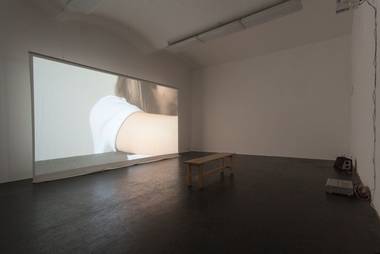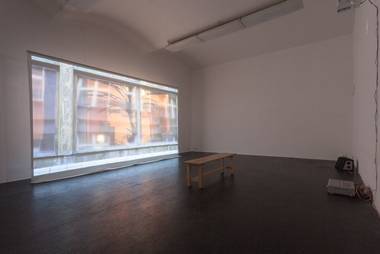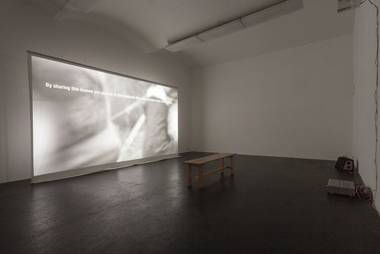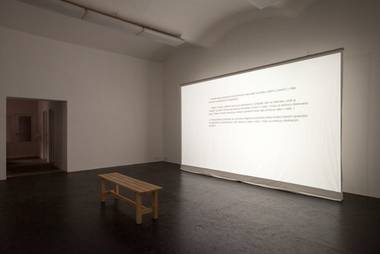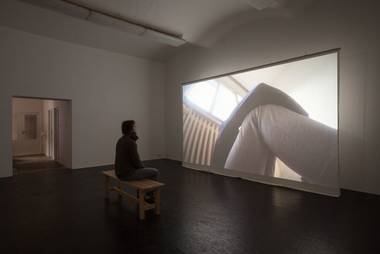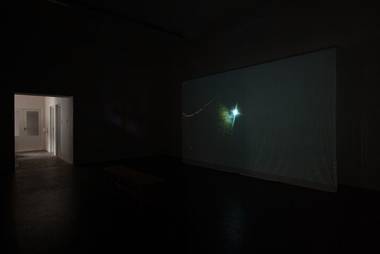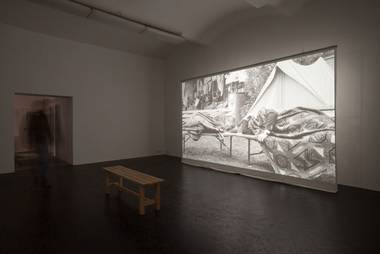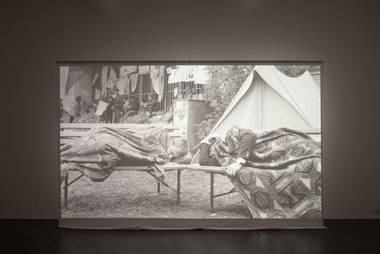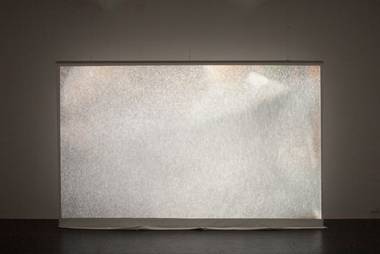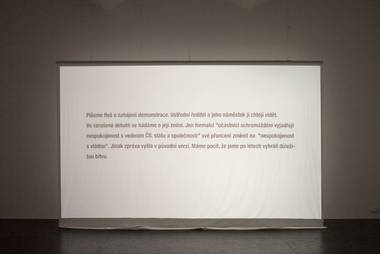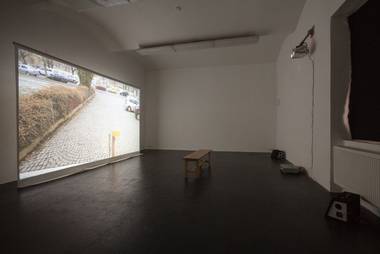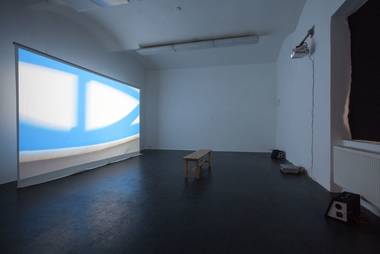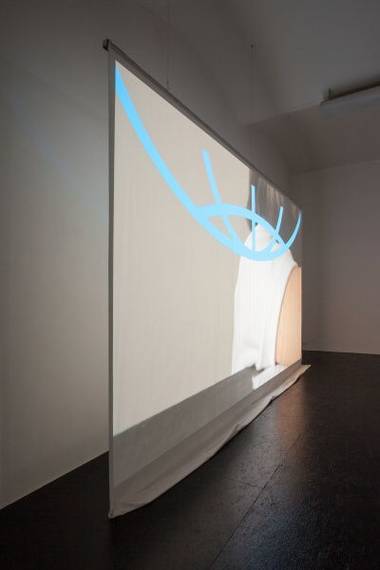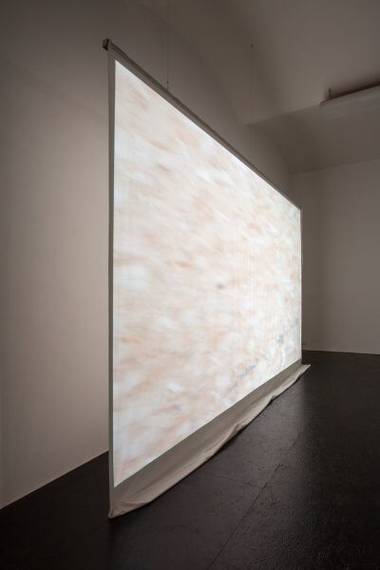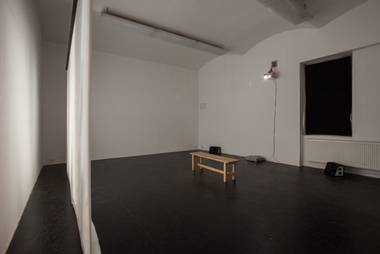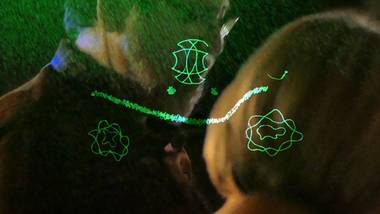Lucie Rosenfeldová a Matěj Pavlík: Living with ghosts
6. 12. 2017 – 7. 1. 2018
opening: 5. 12. 2017
curated by: Gabriela Kotiková
First I would like to ask you Lucie, how do you work? Do you first have an idea about a certain topic that you would like to work on and then you decide how to portray it? Or is it the other way around?
I think that contemplation about topics and images intermeshes and it's hard to say what comes first. Lately, I probably get most of my inspiration from different situations. I generally don't like to have a firm border between theory and practice. There is most probably a moment when I decide to make "artistic" forms, knowingly materialize the thing that I'm thinking about. Until recently, the rhythm of my work was influenced by school, therefore I am looking forward to finding out how my decision to create will arise without an institution.
Matěj, I would like to ask you something similar: did you discover that when working together you share a similar approach in this sense, or was it, on the contrary, interesting to connect different attitudes toward your work? And how did your cooperation originate? Is this the first time you're working together?
I think that my approach is very much influenced by photography in general. You have an object that you approach as a photographer, interpreter or author and you create its images, perhaps sequences. That's how I can say I approach also individual topics that I develop in my work. It's a liberal process, but I always expect a certain ambiguity from things or topics that I work with. Lucie and I worked together before, but this is the first time that we have systematically pursued collective research about how certain images of liberation function today. We would also like to create one in a film.
Lucie, in 2016 you received the top prize at the PAF festival in Olomouc in the contest Jine vize (Another Vision) for your film Polymind. Is it possible to say in a simplified form that the film examined communication between people (in this case between two sisters), which was visually expressed with the help of a computer object programming? Can you give us an idea about the connection with the computer program? Why did you use it?
Rather than about communication, the film was about an agreement. It was about what forms our image of an agreement. The initial moment for the film was my memory of a common dream my sister and I had - faith in some sort of external common consciousness. An agreement originates in programming which is also external for the users. It is mathematical and that is why it is considered to be more unbiased and exact than the agreement in human language based on representation. The so-called object oriented programming works on the basis of a decentralized structure. Individual components - objects can communicate with one another, induce one another, trigger operations without having to know the inside of its code. They communicate through an interface, similar to their developers, for example, whom there are usually more of. I was interested to find out where my disappointment in the faith in a common mind with my sister and the productivity of the mathematical language would meet.
Lucie, in the case of your exhibition Open Call (in cooperation with Alžběta Bačíkova and Martina Smutna) you reacted to the way people are pushed to a certain curtailment of their work, or "fitting into" predetermined rules and regulations that in reality have a negative effect on the work. Does this happen in fine art really that often? Isn't such pressure even stronger in the field of film, which the film also discusses a lot? Or is it similar? It seems to me that in comparison to filmmakers, visual artists are fortunately much freer with respect to the fact that they are not dependent on so many other people when creating their work.
I agree that filmmakers have much worse conditions in this respect. In order for them to create their work they have to convince a producer. Artists are more dependent on grants or on how to properly write a project for an open call to a gallery. These institutions are not always a non-crossable condition for the creation of a piece of work. Back then when we were thinking about our exhibition we used the book Pitch it! a lot, which is a sort of manual for filmmakers about how to properly pitch - introduce and sell the theme of a film to the producer. The book was supposed serve as an encouragement and empowerment for starting filmmakers; on the other hand this encouragement was supposed to be an instrument to acquire the means for their filmmaking. What was interesting for us about pitching was that a methodology of actual themes is commonly taught - which theme can be developed and which cannot be and what kind of format it should have. It was about a sort of intergrowth of the theme of institutions setting competitive conditions.
In your film Living with Ghosts you mention photographer Ariella Azouley's texts that treat the ability of a photograph to determine another type of citizenship than the country is offering. This citizenship is based on a social agreement imprinted in the photograph. To what extent is this theory present in the film and in what way do you refer to it when forming the structure of the plot of the film?
Using this theory, we tried to look at the history of distribution channels during the post-November transformation when the possibility to buy a photograph of the demonstration became a proof of the freedom of a picture. Today, ČTK works also as an Internet database, which makes it possible for any registered user to purchase a digital photograph from an archive. In ČTK 's licence agreements we can see how the effort to cope with the sharing of an image, its authorship and ownership, is inseparable from the institution's history.
Lucie Rosenfeldová (*1986) studied at the Academy of Arts, Architecture and Design in Jiří Černický's Studio of Paint, and subsequently in Dominik Lang's and Edith Jeřábková's Studio of Sculpture from which she graduated in 2015. Matěj Pavlík (*1991) studied at the Academy of Arts, Architecture and Design in Aleksandra Vajd's and Hynek Alt's Studio of Photography from where he graduated in 2017.
Galerii Jelení podporují MKČR, Magistrát hl. m. Prahy, Státní fond kultury ČR, MČ Praha 7
Mediální partneři: Artycok.tv, ArtMap, jlbjlt.net, UMA: You Make Art
